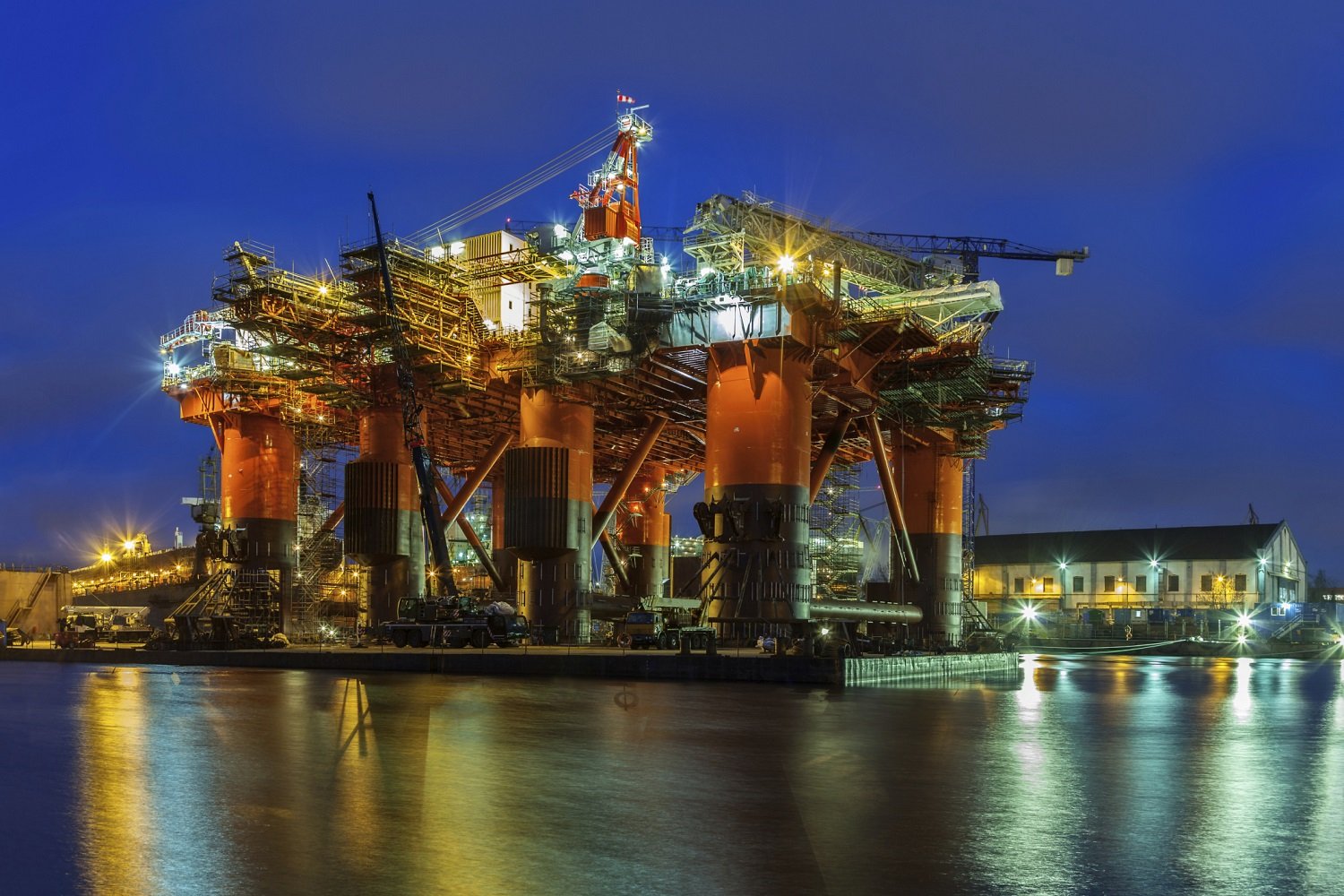Investors looking for income have been faced with a tough challenge over the past couple of years. With bond yields still at near-historic lows, the demand for dividend-paying stocks has been very high. For many, that has led them to invest in Seadrill Limited (SDRL +0.00%), with its substantial payout that has consistently been above 6% since 2011. However, more recent investors who bought shares anytime between September and the most recent earnings announcement on November 23 have seen their investment give back more than 15% of its value, while the rest of the market has gone up 11% -- a net loss of 26% against just investing in an S&P 500 index fund:
While this is very short time period, it's troubling for investors who depend on their capital to generate income, and for investors who look at Seadrill as a source of both income and growth. Will this trend continue, or will Seadrill shares reverse course and start growing again? What about the dividend -- is it safe? Should investors consider Seadrill Partners (SDLP +0.00%), or even competitors like Transocean (NYSE: RIG) with its much larger fleet? Let's take a look.
Reason to sell: understanding risk
This is something that many investors don't truly understand. The simple fact is, Seadrill's risk as an investment hasn't gone down just because the price has fallen. Risk, as many have put it, is a measure of the chance of permanent capital loss: A share price drop doesn't reduce the chance that the stock won't continue falling, after all. So what is the risk for Seadrill?
It's the cost to service the $13.6 billion (and growing) debt that the company is leveraging, growing faster than the business. This can happen in two main ways:
- Interest rates increasing the cost of existing debt
- Limited (or no) demand for some the ~20 new rigs under construction
Considering that the company pays out a quite large share of earnings in the form of dividends, there's reason to be, if not concerned, at least aware:
*Sale of Tender Rig business to SapuraKencana ,resulted in a large one-time profit
**Paid Q4 dividend early due to U.S. investors' tax concerns
The payout ratio further illustrates how this is troubling:

SDRL Payout Ratio (TTM) data by YCharts
First, anything above 100% means that the company is paying out more in dividends than it's generating in earnings. While the payout ratio has fallen substantially this year, it's important to note that a big part of this is the company's decision to sell of its tender rig business, netting a $1.25 billion one-time profit. On the flipside, it's also worth pointing out that 2012's numbers are inflated due to the company's decision to pay five dividends (including Q4 before year-end over U.S. investor tax concerns).
If the company isn't able to keep debt costs low, continue to gain contracts for its new ships, or some combined failure of both, the company would be forced to cut its substantial dividend, which would lead to income-seekers fleeing the stock, crushing investors. This risk is just as real today as it was a few months ago. Here's how Seadrill's debt-to-equity compares to competitor Transocean:

RIG Debt to Equity Ratio (Quarterly) data by YCharts
Reason to buy: Demand will grow and partnerships will facilitate further growth
The reality is, both of the risks above are relatively low-probability events. There is growing demand for oil, and much of the offshore oil that's out there is being found in growingly deeper water, often beyond the capabilities of most drillships currently operating. And despite the growing production of both oil and natural gas reserves in onshore shale, and the slipping demand for oil in North America, global demand isn't shrinking. And when it comes to debt management, the company has used its partnerships, like the one with SapuraKencana (which netted a 7% stake in the company) and the newly formed Seadrill Partners (which it holds more than 75% of) to better leverage debt and capital, while shifting some risk away from itself and also gaining some tax benefit from Seadrill Partners' status as an MLP.
In the process, it has created additional investing opportunities for individuals. Seadrill Partners, while paying a dividend about 50% lower than Seadrill, is expected to grow at a high rate as well, which could reward shareholders looking for capital appreciation as well as income. And while more of the risk will be shifted to Seadrill Partners over time, Seadrill Limited will still heavily depend on income from Seadrill Partners, so expect the company to continue to effectively manage the business.
Seadrill has 20 rigs still under construction, representing 30% of the current fleet and significant growth potential. So far, Seadrill's management has proven their ability to execute on growing income and revenues by keeping the fleet operating under contracts. I think that trend continues.
Final thoughts: Transocean or Seadrill?
Transocean's fleet is substantially larger, but it's also much older, which is at the crux of what makes Seadrill (and Seadrill Partners) an attractive investment. Even if demand does level off, Seadrill's more advanced, newer ships will have an advantage versus older fleets like Transoceans', in both capability and being safer to operate in harsh environments.
Factored together, Seadrill's growth upside and historically strong dividend seem to outweigh the risk of permanent capital loss, and make it more attractive than Transocean, which pays a lower dividend yield and will have to invest heavily in its fleet in the coming years, just to remain competitive. However, due to the competitive nature of this business and the potential risks involved, a little moderation in your position size is probably a good idea.







